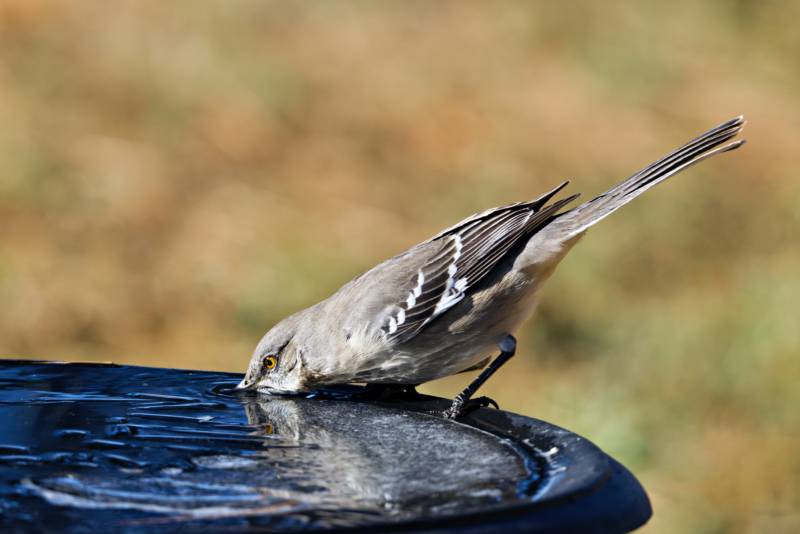I’ve written several blog posts emphasizing the significance of providing a water source for birds in your yard. Today, I want to highlight that birdbaths require some maintenance, especially during freezing temperatures.
I use the Non-Electric Method mention below. You can see in the photos I’m sharing in this post, that their is a thin layer of ice on top of some of the water. The birds are still able to drink, but I try and make sure that most of the ice is removed.


Preventing your birdbath from freezing during winter is crucial for ensuring birds have a reliable water source. Here are some effective methods to prevent ice formation:
Non-Electric Methods:
- Utilize Sunlight: Place the birdbath in a spot that receives direct sunlight.
- Use Dark-Colored Materials: Opt for dark-colored birdbaths or add black river rocks to absorb and retain more heat.
- Insulate the Basin: Before filling with water, insulate the bottom with sand or gravel to help retain heat.
- Add Floating Objects: Place a ping pong ball or similar object in the water. Its movement can prevent ice formation.
- Keep the Birdbath Full: Larger volumes of water freeze more slowly. Refill the bath regularly with lukewarm water.
- Create a Windbreak: Position the birdbath in a sheltered area or create a windbreak to reduce wind chill.
Electric Solutions:
Bird Bath Heaters: Bird bath heaters are one of the most reliable ways to keep water from freezing. These electrical devices maintain a steady temperature in the basin, preventing ice formation. When using a heater:
- Choose the right size for your basin’s diameter and depth.
- Place the heater at the center of the bird bath, fully submerged in water.
- Ensure proper installation and follow the manufacturer’s instructions.
Heated Bird Baths: For a more integrated solution, consider birdbaths with built-in heaters.


Maintenance Tips:
- Clean the birdbath at least weekly.
- Replace the water often, especially during extremely cold weather.
- If ice forms, don’t break it manually. Instead, use warm water to melt it gently.
By implementing these strategies, you can ensure that birds have access to fresh water throughout the winter months, thereby enhancing your backyard wildlife photography opportunities.
